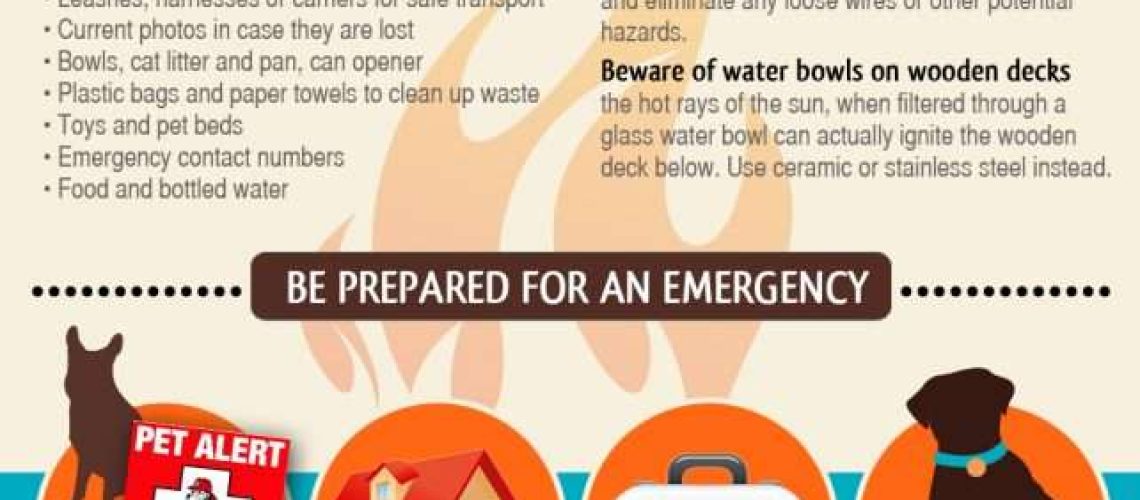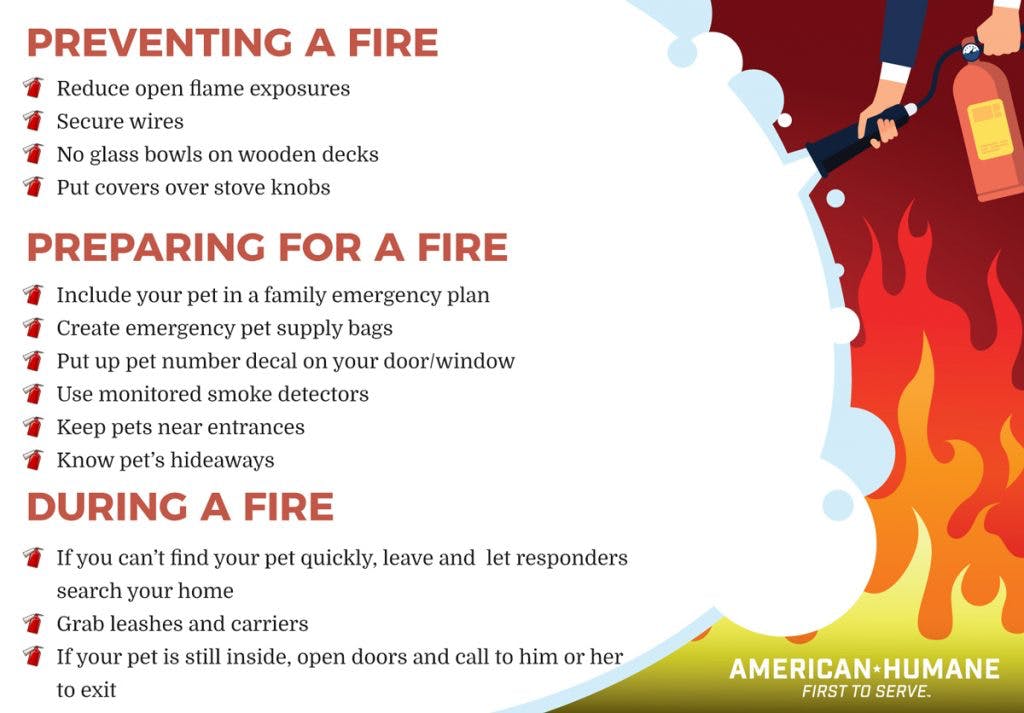Key Takeaways:
- Always keep your pet's identification up to date with current contact information.
- Train your pet to come to you when called, so they can be easily found during an emergency.
- Keep leashes and carriers easily accessible in case of a quick evacuation.
- Place a "pet alert" sticker on your front door or window to inform firefighters that there are pets inside the house.
- Have a designated safe space for your pet, such as a room near an exit, where they can be easily located and rescued if needed.
Introduction:
Imagine a world where you never have to worry about your furry friend's safety during a fire. A world where you can rest easy, knowing that you have taken all the necessary steps to protect your beloved pet. Well, my friend, that world is within your reach. By delving into the topic of "How To Keep Your Pet Safe During a Fire," you will gain invaluable knowledge and skills that could potentially save your pet's life. Understanding this topic is not only essential but also empowering, as it puts you in control of ensuring your pet's well-being in the face of danger.
Now, let's dive right into it. Did you know that every year, thousands of pets are injured or killed in house fires? It's a heartbreaking statistic, but one that we can change with the right information and actions. In this guide, we will explore simple yet effective strategies to keep your pet safe during a fire. From creating an escape plan tailored specifically for your furry companion to identifying potential hazards in your home, we will cover it all.
Picture this: flames engulfing your home while smoke fills the air. Panic sets in as you search desperately for your pet amidst the chaos. But wait! You remember the tips and tricks you learned from this guide. With confidence and clarity, you swiftly locate and rescue your pet from harm's way. The relief floods over you as you both make it out safely.
By investing just a little time and effort into understanding how to keep your pet safe during a fire, you can ensure their well-being when it matters most – when disaster strikes. So join us on this journey as we equip ourselves with the knowledge and tools needed to protect our furry friends from harm.
Remember, being prepared can make all the difference between tragedy and triumph when faced with an emergency situation like a fire. Together, let's empower ourselves to be responsible pet owners who prioritize our pets' safety above all else.
Steps to Keep Your Pet Safe in a Fire
1. Create a Safe Space for Your Pet
When it comes to keeping your pet safe during a fire, preparation is key. Start by creating a designated safe space for your pet in your home. This could be a room that is easy to access and has minimal hazards, such as a bathroom or laundry room. Make sure this space is easily accessible and that your pet feels comfortable there.
In this safe space, place essential items like food, water, and extra supplies such as medications or blankets. It's also a good idea to have a crate or carrier available in case you need to transport your pet quickly.
2. Include Your Pet in Your Fire Emergency Plan
Your family should have a fire emergency plan in place, and it's important to include your pets in this plan. Assign specific tasks to each family member so that everyone knows what they need to do during an emergency.
For example, one person can be responsible for grabbing the pet's carrier or leash while another person gathers important documents or valuables. Practice this plan regularly with your family so that everyone knows their roles and can act quickly if needed.
3. Install Smoke Alarms and Carbon Monoxide Detectors
Smoke alarms and carbon monoxide detectors are essential safety devices for any home. Make sure you have these detectors installed throughout your house, including near areas where your pets spend most of their time.
If possible, choose smoke alarms that have both audible alarms and visual indicators like flashing lights. This will help alert your pets even if they are hard of hearing or asleep when the alarm goes off.
The Importance of Having a Fire Emergency Plan for Your Pet
Having a fire emergency plan specifically tailored for your pet is crucial to ensure their safety in the event of a fire. Pets can easily become disoriented or scared during emergencies, so having a plan in place will help you act quickly and efficiently.
Start by identifying potential escape routes in your home that are safe for your pet. Make sure these routes are clear of any obstacles and can be easily accessed by your pet. Practice using these escape routes with your pet so they become familiar with them.
In addition to escape routes, designate a meeting point outside your home where you can gather with your pets once you have safely evacuated. This will help ensure that all family members, including pets, are accounted for and safe.
Training Your Pet to Respond to Fire Alarms and Evacuation Signals
Training your pet to respond to fire alarms and evacuation signals is an important part of keeping them safe during a fire emergency. Start by associating the sound of the alarm or signal with something positive, like treats or praise.
You can do this by playing the sound of the alarm or signal at a low volume while giving your pet treats or praise. Gradually increase the volume over time as your pet becomes more comfortable with the sound.
Once your pet is familiar with the sound, practice evacuation drills regularly. Use the alarm or signal as a cue for your pet to follow you to their designated safe space or exit route. Reward them with treats and praise when they successfully follow through.
Common Hiding Spots for Pets During Fires and How to Find Them Quickly
During a fire, pets may become frightened and seek out hiding spots where they feel safe. Common hiding spots for pets include under beds, behind furniture, inside closets, or even in small spaces like laundry baskets.
To find your pet quickly during a fire, it's important to know their favorite hiding spots in advance. Take note of where your pet tends to go when they are scared or anxious. This will help you locate them more efficiently during an emergency.
If you can't find your pet right away, try calling their name or using familiar sounds that usually grab their attention. You can also use treats or toys as a way to lure them out of their hiding spot.
What to Do If You Can't Find Your Pet During a Fire Emergency
If you can't find your pet during a fire emergency, it's important not to panic. Stay calm and focus on getting yourself and your family to safety first.
Once you have safely evacuated, notify the firefighters on the scene about your missing pet. Provide them with a description and any information that might help locate your pet.
After the fire has been extinguished and it is safe to re-enter your home, continue searching for your pet. Check all possible hiding spots again and leave out food, water, or items with familiar scents that may attract them back.
The Importance of Proper Identification and Updated Records for Your Pet
Proper identification and updated records for your pet are essential in case they get lost during a fire emergency. Make sure your pet is wearing a collar with an ID tag that includes their name and contact information.
In addition to physical identification, consider microchipping your pet. A microchip is a small device implanted under the skin that contains unique identification information. This can be scanned by animal shelters or veterinarians if your pet is found without their collar or tags.
Keep records of important information such as vaccination records, medical history, and any specific needs or medications your pet may have. Store these records in a safe place, both physically and digitally, so they can be easily accessed during an emergency.
In conclusion, it is important to have a plan in place to keep your pet safe during a fire. By following the steps mentioned, such as keeping them near an exit and having a rescue sticker on your window, you can ensure the well-being of your furry friend in case of an emergency.
How do you evacuate a dog during a fire?
If there is a fire nearby and you need to evacuate, put your pets in carriers near the front door along with food and water. If you can, bring your pets with you when you leave as they may face challenges if left alone and you may have trouble finding them when you return.
What happens to pets in a house fire?
After a house fire, the leading cause of death for pets is not burn injuries, but rather damage to their organs from carbon monoxide poisoning. Carbon monoxide replaces oxygen in the air during a fire.
Do cats usually survive fires?
The majority of cats who experience smoke inhalation have a positive outlook. Several studies have shown that cats without skin burns have an estimated survival rate of around 90%.
Can a cat survive a house fire?
According to Leary, it is a common misconception that animals cannot survive in fires or that they run away from the building. However, in reality, 99% of the time, animals actually hide in a safe place during fires.
Do cats know to stay away from fire?
While cats are known for being curious animals, they usually have a sense to avoid open flames. They have an understanding of potential dangers, especially if the fire produces sparks and embers.
Will my cat jump in the fireplace?
Due to their natural inclination to seek warmth, cats might be tempted to jump onto a fireplace to find a warm surface, which can result in burns on their paws, according to Dr. Richardson.

















